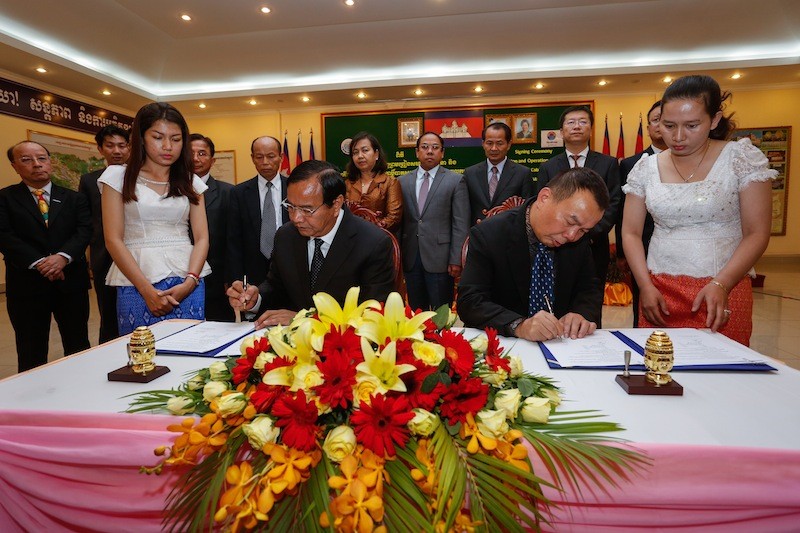The government signed a $70 million investment agreement with a Chinese-owned telecommunication infrastructure provider on Wednesday to connect Cambodia to a 25,000-km underwater fiber-optic network spanning three continents.
The new infrastructure, expected to be operational by 2017, will bring faster and cheaper Internet to the country, according to company and government officials.

The Cambodia Fiber Optic Communication Network (CFOCN), a wholly owned subsidiary of the HyalRoute Group, signed the 25-year, $69.7 million build-operate-transfer deal with the ministry in an afternoon ceremony.
The firm will link Cambodia to the Asia-Africa-Europe-1 (AAE-1)—a submarine network with 100-gigabit-per-second technology and capacity for more than 40 terabits—via a connection point in the Gulf of Thailand off the coast of Sihanoukville.
“The AAE-1 ventures are to be the largest, newest cable constructed, to link all major Asian, African, Middle Eastern and European nations,” read a press release from HyalRoute. “It is expected to significantly bridge the digital divide between Cambodia and developed areas in the world.”
A consortium of 19 global telecommunications firms signed an agreement to develop the network in January 2014. It currently links to 19 countries, with the Cambodia branch expected to be operational by the end of 2017, according to the press release.
“HyalRoute Group has constructed 10,248-km of terrestrial fiber optic cable that covers 25 provinces in Cambodia,” it added. “And the number of customer access network coverage reaches 300,000 households.”
Khov Makara, a spokesman for the Ministry of Posts and Telecommunications, said the project would bring cheaper Internet to Cambodia by reducing its reliance on neighboring countries.
“After the submarine cable is configured, the Internet will no longer need to pass through Vietnam or Thailand,” Mr. Makara said. “When we want to connect to Internet from Hong Kong or France, for example, we can connect directly, so the cost of connection will be cheaper.”
The cable connection would also give Cambodia access to the Internet at a much higher bandwidth, explained Joseph Man Chuen Chan, chairman of the AAE-1 management committee.
“The system would support all forms of communications and applications including broadband Internet, video, voice, data…at a faster speed,” he said.
As of December, Cambodia had 6.7 million Internet users, representing slightly more than 40 percent of the population, according to the Telecommunications Ministry, up from just over 1 percent of the population in 2010.
Kan Channmeta, a secretary of state of the Telecommunications Ministry, said the submarine cable would help meet future demand from both retailers and consumers—including Prime Minister Hun Sen.
“We should be able to respond to increasing annual demand for the Internet from consumers,” Mr. Channmeta said.
“But if we don’t develop better connections, the people would be unable to use data up to their capacity and the speed would falter,” he added.
“The prime minister uses Facebook every day…and so he wants fast-running Internet.”




